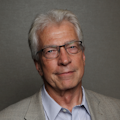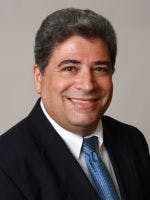Business Forum: Technician education helps meet staffing needs of the photonics community

I talked to Chrys about the well-recognized shortage of technicians in the photonics industry and progress in closing the gap—while providing a rewarding career path for young people and meeting the needs of manufacturers and service providers. You can find a more complete description of LASER-TEC at www.laser-tec.org.
Conard Holton: How serious is the shortage of technicians in the Southeast U.S. and across the country?
Chrys Panayiotou: From a nationwide study conducted by the University of North Texas, the Southeast U.S. needs on average 307 photonics technicians annually but the current output from the existing colleges is only 98. The same study found that 1,592 photonics technicians are needed annually nationwide, but the cumulative output of all U.S. colleges was 350.
CH: Why is the NSF funding your center?
CP: NSF understands that the future of a strong and prosperous U.S. depends on an economy based on advanced technologies. To maintain and expand the global technological lead we presently enjoy, we must prepare the scientists, engineers, and technicians of future generations. The mission of LASER-TEC is to fill the “pipeline” of future laser and fiber optic technicians of the Southeast region.
CH: What sort of staff and facilities do you have?
CP: LASER-TEC has four full-time personnel: director, project manager, project coordinator, and a photonics technologist. In addition we have part-time personnel in North and South Carolina, Alabama, and various contractors for specialized projects. Facilities wise, we have laser training labs in Florida, North and South Carolina, and are expanding in Georgia, Alabama, Mississippi, and Tennessee.
CH: Tell us about the regional photonics-related NSF centers in the U.S. and the future of this sort of program.
CP: The NSF established the National Center of Optics and Photonics (OPTEC) in 2006, with the mission of increasing the number of photonics technicians nationwide. I was a co-principal investigator of OP-TEC since the beginning. We had great success in mobilizing and creating new photonics programs in 37 new colleges across the country. In 2013 the Southeast Regional Center was created, and in 2014 the Mid-West Regional Center formed. We are hoping that a Pacific Regional Center will be created in 2015 and a Northeast Regional Center in 2016.
CH: Why the regional approach?
CP: We moved from the national to regional approach because we found out that the needs of industry are different from region to region. We also found that industry responds favorably to an organization that is local and almost all the stakeholders know each other. The educational programs of each regional center are designed to meet the needs of the region they serve.
p>CH: You are finishing the second year of your program: How is it going in terms of participation?CP: In the summer of 2015, we will be finishing the second year of our program. The participation from colleges of the Southeast has been very encouraging. We started the center with three member colleges and 98 companies. Today, we have 19 member colleges and 370 member companies in the Southeast region. Graduates from our member colleges found employment in companies like Northrop Grumman (FL, NC), Wasatch Photonics (NC), Cree (NC), Novo Nordisk (NC), GE Healthcare (FL), Infrared Associates (FL), Laser Components (FL), Harris Corp (FL), Lawrence Livermore National Labs (CA), Bosch (SC), BMW (SC), and MegaWatt Laser (SC).
CH: That’s good news. You have said that each graduate becomes a “multiplier” in terms of impacting other students and people. What do you mean by that?
CP: One important service we provide is professional development for middle and high school teachers. When these teachers go back in their classrooms they create a “multiplier” effect for us because every teacher impacts on average 125 students annually. We follow up twice a year with each teacher and ask how many lessons, demonstrations, or experiments he/she introduced to classes and how many students were impacted.
CH: What are some of the biggest challenges you are finding when you work with the students and their families and communities?
CP: The first challenge is lack of awareness of the subject and the technologies involved. Lasers are integrated in many sophisticated systems but are not visible to the person using or treated by the system. Similarly, fiber optics are everywhere today but not visible to the everyday person because they are either buried in the ground or under the sea, or are behind walls inside our buildings. The second challenge is very often the refusal of a parent to allow their child to become a technician. The majority of parents want their children to obtain at least a bachelor’s degree and look down at two-year Associate’s degrees.
CH: How are regional companies and institutions—potential employers—responding? What more could they do?
CP: Regional companies are very responsive. They participate in our surveys and provide input and advice to the center. They also notify us immediately when they have openings for new technicians or if they need interns. We are working with employers to bring awareness and education to parents to be more supportive of their children who would like to become technicians. We are collaboratively creating print materials and organizing information sessions for parents, teachers, and students.
CH: So how did you get into photonics and education?
CP: I started my quest to learn electronics on the island of Cyprus when at 10 years old I built my first crystal radio receiver and listened to radio signals from ships passing through the Suez Canal. Having the intense desire to learn how that was possible, I studied electrical engineering at the Higher Technical Institute in Cyprus and passed the Full Telecommunication’s Certificate of the City and Guilds of London Institute. With a Fulbright scholarship from the U.S. government, I completed my master’s in electrical engineering at the University of Central Florida. Then I began a career working for industrial controls and communications companies. For the last two decades I have been in academia, starting as an assistant professor. I received my PhD in educational leadership from Florida Atlantic University.
CH: How did you get started in this pursuit? What have you learned about making these programs succeed?
CP: I started in 2005 when OP-TEC needed a partner to create photonics programs in Florida. To make these programs succeed, you must create strong partnerships with industry, which will hire your product—the students—and create a “pipeline” of new students feeding the program from the secondary schools. You must also be vigilant on emerging technologies, compiling or creating the teaching materials, and setting up the lab facilities for training these new technologies. This field is very dynamic, and you have to be up to date. It is important to attend conferences and industrial expositions.
I am very optimistic about the future. I really feel very positive when I see students who are the first in their family to attend college—they are full of enthusiasm and hungry for learning about laser and fiber optic technologies. I also feel very optimistic when I go to conferences like Photonics West and listen to the research presentations of the new PhDs who are inventing the photonic technologies of the future.
About the Author

Conard Holton
Conard Holton has 25 years of science and technology editing and writing experience. He was formerly a staff member and consultant for government agencies such as the New York State Energy Research and Development Authority and the International Atomic Energy Agency, and engineering companies such as Bechtel. He joined Laser Focus World in 1997 as senior editor, becoming editor in chief of WDM Solutions, which he founded in 1999. In 2003 he joined Vision Systems Design as editor in chief, while continuing as contributing editor at Laser Focus World. Conard became editor in chief of Laser Focus World in August 2011, a role in which he served through August 2018. He then served as Editor at Large for Laser Focus World and Co-Chair of the Lasers & Photonics Marketplace Seminar from August 2018 through January 2022. He received his B.A. from the University of Pennsylvania, with additional studies at the Colorado School of Mines and Medill School of Journalism at Northwestern University.
